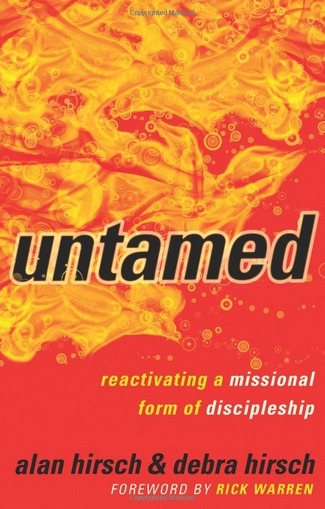by Alan Hirsch and Lance Ford
Alan Hirsch, one of my favorite authors, provides a theological framework for missional practice, something much needed. In this and his other books, he will challenge your thinking to the core. Entrenched deception has to be confronted head on.
The church in America must rethink her priorities and practice if we are to become the life-giving force we were designed to be.
Section 1: Putting Our Hearts into It (Missional Paradigm)
In the first chapter, Hirsch explains how to view daily life with a missionary’s eye.
The second chapter is devoted to helping us to actually see the people around us instead of looking right past them as if they were “extras” on a movie set who have no real purpose beyond being part of the background.
The third chapter talks about putting our gospel beliefs into action.
Section 2: Wrapping Our Heads around It (Missional Analysis).”
The fourth chapter deals with Western affluence and the church’s spiritual bankruptcy. Americanism is examined as an opposing force to God’s kingdom. The fifth chapter speaks to the need for Christians to simplify their lifestyles in order to further our mission. The sixth chapter tackles the gnarly problem of what is wrong with life in suburbia, including the idolization of the nuclear family.
Section Three: Doing Something about It (Missional Action)
Chapter seven addresses house churches and and small groups as communities of mission. The following chapter focuses on the missional and apostolic power of hospitality. The last chapter is entitled “Salt Blocks and Salt Shakers” and looks at the need to take the gospel outside the walls of the church.
Section 4: Debriefing
Several “elephants in the room” are exposed, which need to be removed, if the church is going to make a turn around in our culture in the 21st century. The challenge is the need for Christianity to become a people movement instead of a church institution.
Hirsch suggests a new definition of the church as the following: a Christ-centered covenantal community that prioritizes worship, discipleship, and mission.
Another “elephant” is the prevailing view that people tend to completely associate the kingdom of God with the activity of the church. Hirsch quotes Reggie McNeal on this topic:
“…we need a kingdom-shaped view of the church, not a church-shaped view of the kingdom.” (p.248)
Hirsch goes on to say:
“…it is going to take the whole body of Christ as a fluid, dynamic, witnessing agency, active in every possible area of life, to bring the gospel of God’s love in to his world.” (p.249)
A third “elephant” is the attractional-extractional model of the church.
If Christianity is going to once again become a world transforming people movement, we cannot extract people out of their cultures by attracting them into the church culture.To do so effectively cuts them off from the very people they are best equipped to reach with the gospel. Hirsch writes: “So, assuming that we bring them to our church, and we happen to do a good job at it and effectively socialize them into our church community, we are in effect snapping the natural, organic connections that they have with the host community they come from. This is very problematic because we know that the gospel travels along relational lines.” (p.251)
“Attractional forms of church in missionary contexts eventually are self-defeating because the church quickly exhausts its supply of relationships and because the new converts quickly become a cultural clique or religious ghetto increasingly marginalized from the original culture.” (p.252)
Another issue that needs examining is related to sustainability. Hirsch writes about the fact that many “everyday Christians” feel too tired and pressured after work to devote much time to missional pursuits. The author suggests that we need to take a look at the work situation and make any needed changes rather than abandon the mission.
If we do not take steps to provide greater time and energy to the mission, it will be difficult if not impossible to sustain the effort of mission.
Another practice that can help maximize sustainability is to do ministry in pairs or groups, rather than maintaining a lone ranger approach. By working together we support each other and train others to do the work, which increases sustainability. The third area that is connected to sustainability deals with the size of our church communities.
The author suggests that assemblies in the 30-120 range are most sustainable. Many smaller groups can be led by “non-professionals,” thus increasing sustainability.
Hirsch also advocates networking with other like minded ministries and networks in the area in which we are working.
The last “elephant in the room” has to do with finances for the full-time worker. He has several good suggestions. This book is a treasure trove of great quotes and ideas. You will want to hang on to your copy for future reference and possibly use it as a study guide for those interested in missional Christianity.




